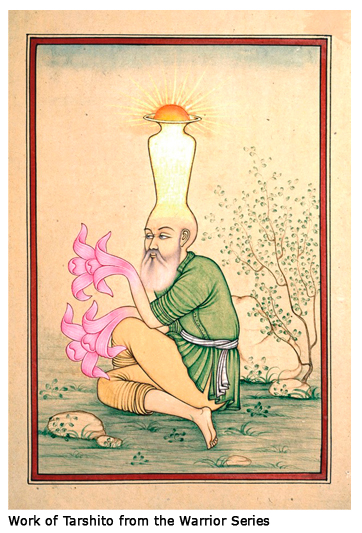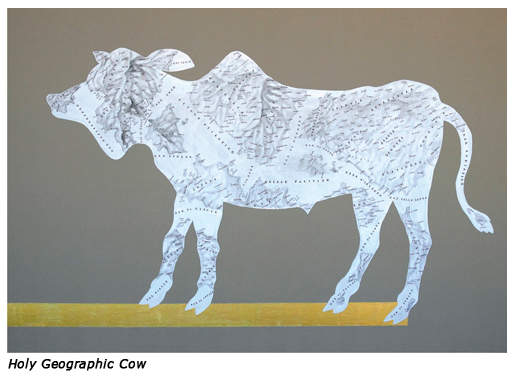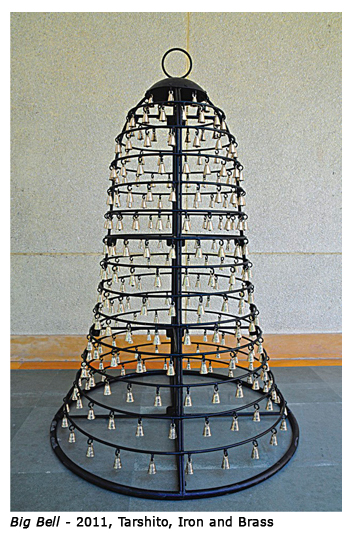- Publisher's Note
- Editorial
- In Conversation with Kanishka Raja
- Definitional Lack in an Inclusive World: Cutting Edge as Responsible Art
- Democratization Through Cutting Edge Art
- Mumbai for Cutting Edge
- Moments in Time (And a Little While After)
- In Transition
- Tip of Our Times
- Srishti School of Art, Design and Technology – A Cradle for Creative Excellence
- Cutting the Edges of Architecture
- Overview Cutting Edge
- The Matter Within: New Contemporary Art of India Featuring Photography, Sculpture and Video
- Generation in Transition: New Art from India
- Indian Master Painters at India Art Festival
- Life, Luxury & the Avant-Garde
- Mother India: The Goddess in Indian Painting
- The Last Harvest: Paintings of Rabindranath Tagore
- Asia Society Museum Presents Exhibition of Rabindranath Tagore's Paintings and Drawings
- Stieglitz and his Artists: Matisse to O'Keeffee
- Beauty of Unguarded Moments
- Across Times, Across Borders: A Report on the Chinese Art Exhibition
- A Summer in Paris
- Random Strokes
- The Emperor’s New Clothes and What It Really Means
- Understanding Versus Adulation
- What Happened and What’s Forthcoming
- Occupy Wall Street, The New Economic Depression And Populist Art
- Unconventional with Witty Undertones
- Narratives of Common Life and Allegorical Tales In Traditional and Modern Forms the Best of Kalighat 'Pats'
- Colours of the Desert
- Unbound
- I Am Here, An Exhibition of Video Self Portraits at Jaaga
- Staging Selves: Power, Performativity & Portraiture
- Venice Biennale Outreach Programme A Circle of Making I and II
- Cartography of Narratives, Contemplations on Time
- Joseph Kosuth: The Mind's Image of Itself #3' A Play of Architecture and the Mind
- Maharaja: Reminiscing the Glorious Past
- Art from Thirteen Asian Nations
- Tibetan Arms and Armor at Metrpolitan Museum of Art
- The Art of Poster Advertisement
- Unusual Angles and Facets of Museum Buildings
- Elegant Fantasies
- Art Collection and Initiatives
- Art Events Kolkata
- Mumbai Art Sighting
- Art Bengaluru
- Musings from Chennai
- Preview
- In the News
ART news & views
Venice Biennale Outreach Programme A Circle of Making I and II
Volume: 4 Issue No: 22 Month: 11 Year: 2011
Review
by Uma Prakash
New Delhi. The 54th Venice Biennale which opened on 4th June 2011 will be celebrated all over the world with the Venice Biennale Outreach Programme. This is the first time the Biennale will cross the boundaries of Italy and reach out to other countries, where the Italian Cultural Centres will partner with other nations, to host and showcase the works of 217 Italian artists. These 89 exhibitions being held inside the Italian Cultural Centres will be recorded on video for the Italian Pavilion at the Arsenale from 4th June 27th November.
 In India Art Heritage is the privileged partner of this prestigious Venice Biennale Outreach programme. They will collaborate with the Italian Cultural Council, New Delhi, to present the recent work of Tarshito, an Italian artist and an architect by training, in two exhibitions entitled A Circle of Making I and II to be held at the Foyer & Exhibition Hall, Istituto Italiano di Cultura and Art Heritage Gallery, curated by Laila Tyabji and Amal Allana. This is a perfect union of two nations who possess a rich cultural heritage.
In India Art Heritage is the privileged partner of this prestigious Venice Biennale Outreach programme. They will collaborate with the Italian Cultural Council, New Delhi, to present the recent work of Tarshito, an Italian artist and an architect by training, in two exhibitions entitled A Circle of Making I and II to be held at the Foyer & Exhibition Hall, Istituto Italiano di Cultura and Art Heritage Gallery, curated by Laila Tyabji and Amal Allana. This is a perfect union of two nations who possess a rich cultural heritage.
The event organized by Istituto Italiano di Cultura and Italian Ministry of Foreign Affairs with the collaboration and art collections of Devi Art Foundation, Art Heritage Gallery, Nature Morte, Sandy Starkman and in association with Ishan Khosla Design.
 What is most remarkable about these works is the power of the visual language which transcends all verbal communication. Tarshito's involvement and understanding of a culture that is thousands of years old is remarkable. It is reflected in Tarshito's excitement and energy when discussing India. “The meeting, so unique and exclusive, between me and the Indian “craftsman” makes impossible the work's repetitiveness (distinctive of the depreciation of crafts in comparison with art), because my energy, my concept, mix with the craftsman, making that kind of traditional painting, that act, unique and full! So the search for people to work with becomes very important and careful, in order to make a magic meeting! For me, being contemporary means remembering myself as a “love warrior”, using in my life all the qualities inborn in each of us, with our time's careful and critical eye pointed towards the blossoming of human being into a full life, into a celebration of life itself” states the artist.
What is most remarkable about these works is the power of the visual language which transcends all verbal communication. Tarshito's involvement and understanding of a culture that is thousands of years old is remarkable. It is reflected in Tarshito's excitement and energy when discussing India. “The meeting, so unique and exclusive, between me and the Indian “craftsman” makes impossible the work's repetitiveness (distinctive of the depreciation of crafts in comparison with art), because my energy, my concept, mix with the craftsman, making that kind of traditional painting, that act, unique and full! So the search for people to work with becomes very important and careful, in order to make a magic meeting! For me, being contemporary means remembering myself as a “love warrior”, using in my life all the qualities inborn in each of us, with our time's careful and critical eye pointed towards the blossoming of human being into a full life, into a celebration of life itself” states the artist.
Tarshito looks every inch an artist in his casual apppearance.His sheer excitement and joy when talking about his creations is infectious.The artist has gone deep into understanding of the dynamics of Indian culture and has acquired a profound insight into the progress of ancient Indian cultures and its rural craft and livelihoods. In his iimitable manner he has managed to reach out and form close friendships with artisans and been intruemental in reviving rare crafts. His earlier sculptures stand out in architectural spaces which are rich in their old fashioned decorations and period style like the inside of a church. His sculpture boast of aesthetic qualities and magical efficacy.
Tarshito's work is a creative collaboration with traditional Indian artists for over a decade.With his innate talent and inspiration derived from various India art traditions he has created works that exude an unusal artistic synergy. He has juxtaposed tribal traditions of Warli, Mithila, Jharkhand, the delicate miniatures of Bikaner and the colourful devotional Pattachitra of Orissa with his own artistic sensibilities to create an impressive series of multiple dialogues.Furethermore his sculptures endorse the versatility of the artist in handling mediums like terracottas and metal.
It is not the first time that Italian artist Tarshito (Nicola Strippoli) has indulged in a dialogue with India. He first came to India in 1979, like many Europeans, eager to explore, became a follower of Osho or Bhagwan Sri Rajneesh who gave him the Sanskrit name Tarshito which means "Thirst for Inner Knowledge”. Tarshito's spiritual search is evident in his works. The meditative nature has not been achieved by accident; rather it is the result of long contemplation.
In 1986 Tarshito's creative journey to India resulted in the stunning production of Carpets of Meditation in 1987. Fascinated by India's rich artistic traditions he has developed a series of working relationships with the most highly skilled master craftsmen in India. It was his exhibition at the Crafts Museum of New Delhi entitled The Gold and the Clay in collaboration with the Istituto Italiano di Cultura that was innovative and truly inspiring. He had amalgamated carpet-weaving; embroidery, terracotta modeling, and miniature painting to create a visual language that endorse his belief that art has no borders.
His project Jugalbandi initiated by art historian and curator Jyotindra Jain was Tarshito's collaboration with the various Indian artists who worked at the National Crafts Museum, New Delhi. He traveled into various regions and encountered art forms and artists. The works that came out of this project became part of exhibitions in India and Europe.In Jyotindra Jain essay for the exhibition Jugalbandi Encounters in Creation held in the Nehru Centre London he wrote
'... the success of the collaborative work lay in the fact that the Indian counterparts of the project did not speak or understand Tarshito's verbal language nor did Tarshito theirs. From the beginning both were conditioned to work with the language of each other's inner vision and intuition...'
John Lennon's famous dictum: "Imagine there's no countries." is also Tarshito's dream. He creates world unity by juxtaposing English and Italian texts with paintings and textiles. His Golden Vases and Hybridized Maps (India and Italy joined together to create one new continent, for instance) are coupled with dynamic striped textiles from Nagaland. The lyrical mix of colour and strong geometrical patterning generally achieves the desired spontaneity.
 His Geographic Cow's body is filled with world maps in mixed media on canvas. He has taken Lennon's concept to another level by painting the maps of India and Italy on an Ambassador car's chassis.
His Geographic Cow's body is filled with world maps in mixed media on canvas. He has taken Lennon's concept to another level by painting the maps of India and Italy on an Ambassador car's chassis.
On some banners he proclaims "One Land, One Humanity" ("Una Sola Terra, Una Sola Umanita" in Italian) while others are dedicated to Mother Teresa.
In smaller works, Tarshito combines text, vases and brushwork to create paintings that are both spontaneous and contemplative.
Tarshito's range of work on display will include a number of works using ceramics that the artist has made while in Kolkata. Tarshito uses the fish as a symbol of peace and freedom. He juxtaposes Roman alphabets with the fish symbol in creating striking and unusual series.
The vase is a favourite with him. He combines different colours to create striped relief works and as the skin of vase forms. Vase, which occurs repeatedly in Tarshito's work, is a symbol of the self being a receptacle, open to the sky ready to receive. In God Tarshito's vase like image in acrylic contains Veeraben Marvoda Kutch piece of art and embroidery.
Profoundly impressed by the diversity and richness of Indian craft traditions, he has developed collaborative relationships with a wide variety of artisans all over India. He seems to have understood the essence of Indian craft, churned it in his head, and transformed it through a modern and international sensibility into a contemporary form. This is most evident in the dramatic sculpture Big Bell in iron and brass. Although reflective of the large vases he had done earlier with different mediums he has maintained an Indian element.
 The artist's journey filled with introspection is a path of discovery and expressions of devotion. In some pieces there is a slice of deeply felt humanity, a moment of spiritual revelation. Open to all techniques, his production encompasses painting (both large-scale and miniature), sculpture, drawing, textiles, jewellery, and applied design. Tarshito gives full credit to the artisans he collaborates with and acknowledges fully their input in his works.
The artist's journey filled with introspection is a path of discovery and expressions of devotion. In some pieces there is a slice of deeply felt humanity, a moment of spiritual revelation. Open to all techniques, his production encompasses painting (both large-scale and miniature), sculpture, drawing, textiles, jewellery, and applied design. Tarshito gives full credit to the artisans he collaborates with and acknowledges fully their input in his works.
Image Courtesy: Tarshito Studio